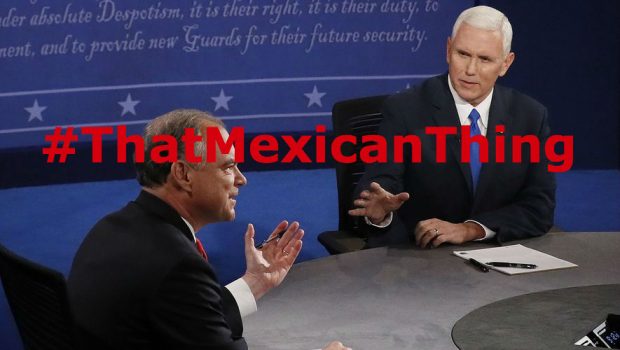That Mexican Thing
Tanya Huntington
What does Mexico mean to the average US citizen? Jumping beans? Speedy González? The lovely señorita from the Corona beer tray, perhaps? Does it conjure up the image of the sleeping Mexican, as it did for a certain hapless White House chef who chose that particular leitmotif to create a dessert for a state dinner held in honor of the president of Mexico –one that was swiftly censored moments before it was able to cause an international incident? How about a beach vacation, let’s say something under the category of the “exotic erotic” fantasy embodied by Elvis’ gyrations down in Acapulco… or better yet, a permanent beach vacation calculated to escape the long arm of the law, as in The Shawshank Redemption?
From tropical fiestas to desert siestas, these stereotypes have consistently trumped realities. No matter how often Mexican laziness has been disproven in studies that have shown it to be the industrialized nation that works the longest hours, or how often it is wryly pointed out that the sandy beaches most Mexicans live near are those of Los Angeles –or that Mexicans are in fact men, not mice– these images have proven to be firmly imbedded in the gringo subconscious.
When Rose Mary Salum founded Literal: Latin American Voices a dozen years ago, the project was born out of her perception as a recent immigrant that even in Texas, tunnel vision prevailed regarding Mexican and, in a broader sense, Hispanic culture. It was in that same spirit that we decided my column would focus not on the usual issues tackled by the so-called “expat” community living south of the border, but rather on cultural aspects that people back in the States might not be aware of, having fallen prey to stereotypes pervasively reinforced by economic disparity.
No time like the present to debunk one such stereotype, neatly encapsulated in the interjection Mike Pence made during the vice presidential debate last Tuesday evening. When Pence referred to concerns regarding the xenophobic threats issued by his running mate Donald Trump as “that Mexican thing,” he was addressing those who dwell on one side of a cultural divide that has somehow withstood globalization, a wall of ignorance that sustains –despite continual evidence to the contrary– that all things Mexican and all things American are like oil and water, and never the twain shall meet.
This is actually more of a myth than a stereotype. By now, I should not have to remind my fellow Americans that Texas, California, Nevada, Utah, and portions of Arizona, New Mexico, Colorado, and Wyoming formed part of Mexico until 1848, when they were ceded as a result of “Polk’s War” –ostensibly a military operation to aid Texan interests, in reality an invasion viewed by Abraham Lincoln, among others, as a massive land grab. Nor should it come as any surprise that these same territories have maintained to some degree their Mexican heritage and culture. Just as a map of the Holy Roman Empire can be used as a fairly accurate indicator of where members of the Catholic faith continue to reside in modern Europe, there are borders here in North America that linger far beneath the surface, ones that cannot be easily erased by politics.
Aside from our economic codependency on multiple layers both formal and informal, the concept of Mexico and the US as two completely separate entities willfully dismisses the fact that there are approximately one million U.S. Americans currently living in Mexico, or that we are not confined to retirement communities. Many of us have intermingled, intermarried, and built bicultural careers on the hope of someday reducing what blind spots may persist between us.
True enough, the United States and Mexico possess many differences, ones that I would be reluctant to eradicate by assimilation in either direction. But there is one undeniable reality: we are all neighbors, no matter what side of the border we live on. And while you can pretend your neighbors do not exist, you cannot make them disappear, no matter how high a wall you build in your mind.
 Tanya Huntington is the author of Martín Luis Guzmán: Entre el águila y la serpiente, A Dozen Sonnets for Different Lovers, and Return. She is Managing Editor of Literal. Her Twitter is @Tanya Huntington
Tanya Huntington is the author of Martín Luis Guzmán: Entre el águila y la serpiente, A Dozen Sonnets for Different Lovers, and Return. She is Managing Editor of Literal. Her Twitter is @Tanya Huntington
Posted: October 5, 2016 at 9:51 pm










